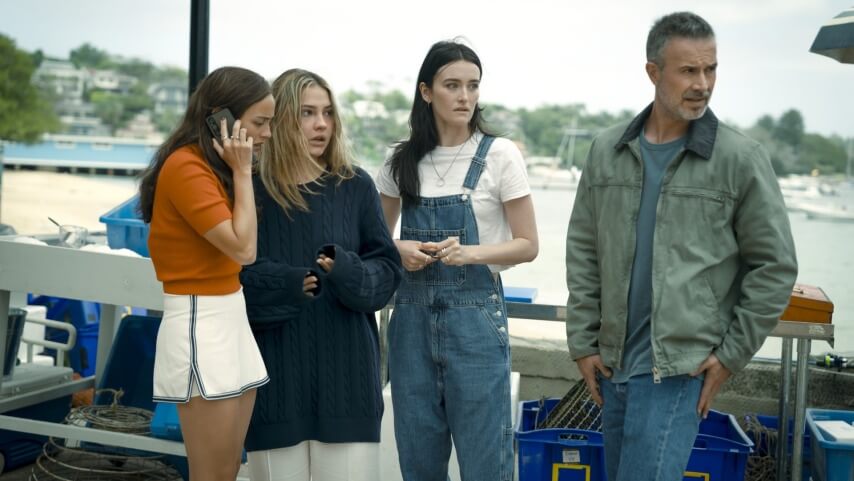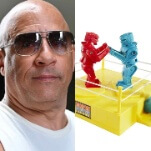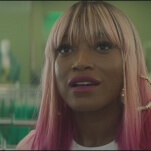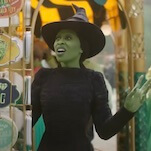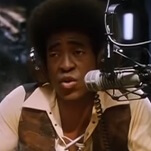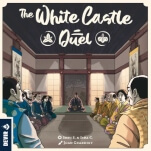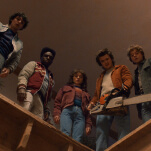Throughout the new I Know What You Did Last Summer, it’s hard to put the fact that the crime was never really the fault of the main characters out of your mind. Sure, they should have reported the crash to the proper authorities, but this pales in comparison to the wrongs the original group commits. That the new killer is as motivated by revenge as the original one strains credulity, especially when the first characters who get killed, Wyatt (Joshua Orpin) and Tyler (Gabbriette Bechtel), really had nothing to do with it. Why are these specific characters even in this incredibly niche copy of a life-or-death situation? While teen slasher flicks aren’t usually beloved for their airtight logic, IKWYDLS makes exceptionally little sense—that is, until a meta twist at the end.
Throughout the legacy sequel, we follow the new core group (led by Chase Sui Wonders’ Ava and Madelyn Cline’s Danica) through the old haunts of the original movie, now gussied up by the Southport Board Of Tourism, which desperately wants to move the town past its reputation for grisly murder. Even the fishing boat from the original climax has been replaced by a luxury yacht. But one person can’t move on. At the end of the film, it’s revealed that the perpetrators are both Stevie (Sarah Pidgeon), whose loved one died in the car at the beginning, and her boss Ray Bronson (returning cast member Freddie Prinze Jr.), who put her up to it. He instructed Stevie to get closer to Danica over the past year and apparently walked her through the steps to enact this very specific kind of revenge. His reason? People were moving on from what happened in 1997. Forgetting that history is something that Ray (and the filmmakers) cannot abide.
This development is admittedly more thrilling on a meta level than in a textual sense. The original I Know What You Did Last Summer looms as a classic of the ‘90s teen slasher genre, but is not quite held in the same esteem as Scream, which came out about 10 months before it. Likewise, the rebooted Scream franchise, which began in 2022, turned its self-referential eye toward the idea of legacy sequels (or legacyquels) and elevated horror to include current trends and give Gen Z its own version of the story. It’s fair to assume that filmmaker Jennifer Kaytin Robinson and Sony wanted to do the same thing for the young people who half-remembered their IP: reinvent the franchise in a way that would satisfy original fans while bringing new ones into the fold. But Ray’s motivation undermines that in a surprisingly clever way. The events of the film only happened because the desperate, left-behind original characters wanted it to happen. It wasn’t about reaching a new generation, but placating an older one. But Ray fails to understand, just like so many legacyquels, that while you can keep playing the hits, you cannot make it 1997 again (neither through science nor magic).
It’s not news that our current entertainment ecosystem is obsessed with dredging up artifacts from the past and trying to pass them off as something new, or at least more informed. Sometimes, you have to wonder what Gen Z will even be nostalgic for in another 28 years when so much of the entertainment pushed on them is based on the nostalgia of a generation (or two) before them. It would be ridiculous to expect an I Know What You Did Last Summer legacyquel to correct this problem, but the tacit admission that it was never really about the next generation points to a larger truth about mining nostalgia. Sure, maybe the kids born 10 years after the original movie came out will enjoy the reboot, but it’s really about their parents, the nostalgia they have for their own youth and the disposable income they bring with it. As Ava and Danica debrief at the end, they talk about how much they hated the whole experience. Lucky for them, Brandy’s Karla Wilson shows up in the mid-credits scene to tease yet another sequel. Even if a new generation doesn’t want it, the film knows that there are people that do.
